THE
PHOTOGRAPHERS GUIDE
TO DRONES
 COLIN SMITH
COLIN SMITH

The Photographers Guide To Drones
Colin Smith
photoshopcafe.com
Project editor: Maggie Yates
Project manager: Lisa Brazieal
Marketing manager: Jessica Tiernan
Copyeditor: Scout Festa
Layout and type: WolfsonDesign
Cover design: Charlene Charles-Will
Indexer: Maggie Yates
ISBN: 978-1-68198-114-7
1st Edition (1st printing, October 2016)
2016 Colin Smith
All images Colin Smith unless otherwise noted
Rocky Nook Inc.
1010 B Street, Suite 350
San Rafael, CA 94901
USA
www.rockynook.com
Distributed in the U.S. by Ingram Publisher Services
Distributed in the UK and Europe by Publishers Group UK
Library of Congress Control Number: 2016930697
All rights reserved. No part of the material protected by this copyright notice may be reproduced or utilized in any form, electronic or mechanical, including photocopying, recording, or by any information storage and retrieval system, without written permission of the publisher.
Many of the designations in this book used by manufacturers and sellers to distinguish their products are claimed as trademarks of their respective companies. Where those designations appear in this book, and Rocky Nook was aware of a trademark claim, the designations have been printed in caps or initial caps. All product names and services identified throughout this book are used in editorial fashion only and for the benefit of such companies with no intention of infringement of the trademark. They are not intended to convey endorsement or other affiliation with this book.
While reasonable care has been exercised in the preparation of this book, the publisher and author assume no responsibility for errors or omissions, or for damages resulting from the use of the information contained herein or from the use of the discs or programs that may accompany it.
This book is printed on acid-free paper.
Printed in China
CONTENTS





WAIKIKI BEACH, OAHU, HAWAII JULY, 2015 DJI PHANTOM 3 PROFESSIONAL
This aerial panorama was shot from a low altitude, so the buildings appear against the sky. Shot from about 1200 feet away.
CHAPTER 1
SAFETY AND REGULATIONS
SAFETY CERTAINLY ISNT SEXY, but then again, neither is being sliced by a propeller. Safety is one of those subjects that no one wants to talk about until after an accident. Im going to keep it short and sweet, and give you a crash course on safety and regulations. Safety really is common sense, but Im sure there are a few things you might not have thought about. Safety goes hand in hand with most current regulations. Im not going to go into details about regulations, because not all readers are in the United States. You need to find out the current rules for your country or region. I say current because the rules are always changing as local authorities play catch-up with technology.
SAFETY
YOUR AIRBORNE CAMERA IS NOT A TOY. Spinning propellers and falling objects have the ability to injure people. Depending on the aircraft you have, you could injure or possibly kill someone if you arent using basic safety and common sense.
Preflight Safety
The first thing you want to do is create some kind of preflight safety check before flying. For instance:
- Are the batteries fully charged in your remote, your aircraft, and your FPV?
- Have you inspected your propellers for damage and made sure they are tightly secured?
- Are there any cracks or loose parts on your aircraft that could fall off during flight?
- Is your takeoff area open and free from obstructions such as trees and power lines? If there is a return to home failsafe, is there enough open space for an auto landing?
- Are you clear of people and animals for takeoff and landing? While it may be fun to have an audience, if there are too many interested people, unsupervised children, or dogs, it might be a good idea to find a different location to fly.
- Is it too windy or wet for safe flying? How is visibility?
- Are you near an airport? (See the Regulations section.)
- Are you near large metal structures? These structures have been known to cause interference with the compass, resulting in erratic flying.
- Have you calibrated your compass?
When starting up your aircraft, always turn on the controller before the aircraft, and always shut off the aircraft before turning off the controller. Its important to never have your aircraft on unless the controller is on. If the aircraft grabs a rogue signal and your controller isnt on, you have no way to control the aircraft to bring it back on course.
Make sure you have the latest firmware running (more about this in the next chapter). Whenever doing a firmware update, leave the propellers off. This is the only time you will turn on your aircraft without the controller being on.
In-Flight Safety
If you take off in a gusty breeze, always stand upwind. That way, if your copter blows over, it will blow away from you and not into you. I have heard people say that you should fly into the wind for lift. This may be true for fixed-wing aircraft (its why an aircraft carrier turns into the wind for takeoff), but a multi-copter drone has zero aerodynamics and is VTOL (vertical takeoff and landing), so there is no benefit to flying into the wind. Unless you strike an obstacle, crashes and tip-overs are most likely during takeoff and landing. Once airborne, its extremely unlikely you will lose control and crash.
Whats a tip-over? Just before your aircraft lifts, or during landing, its props are spinning fast and its very light on its feet. Sometimes it can tip over and run along the ground. If you are standing upwind, a tip-over isnt really a safety threat as much as an annoyance, since your props can get scuffed or cracked. I wouldnt call this a crash, because tip-overs happen all the time, even to experienced pilots.
When you are airborne and at a lower altitude, but clear of obstacles and peoples heads, quickly run through each control to make sure everything is responding correctly. Ascend and descend slightly, bank forward and backward, roll left and right, yaw left and right. Do small movements just to make sure everything is OK. Dont worry, these terms are explained in the next chapter.
Always be aware of your environment. Take note of potential hazards and obstacles before takeoff, and constantly keep an eye out and know what is happening around you. If you hear a manned aircraft, try to see where it is. If you cant locate the manned aircraft, immediately descend to a low altitude or land the drone.




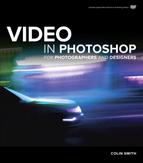
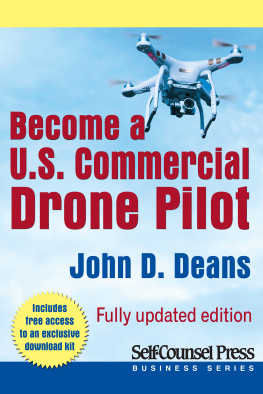
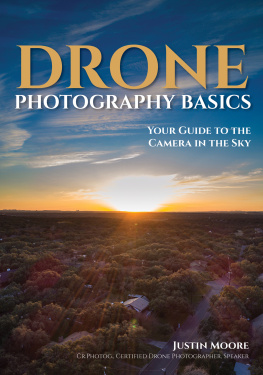
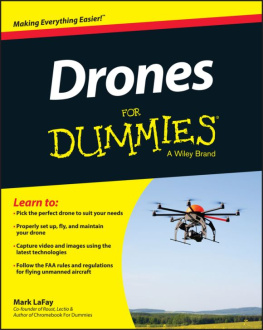
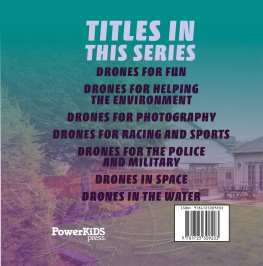
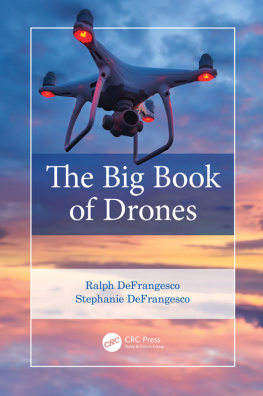

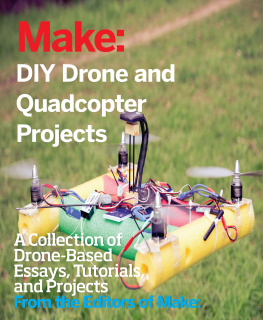

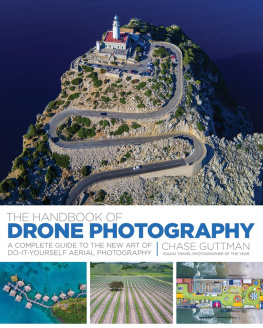

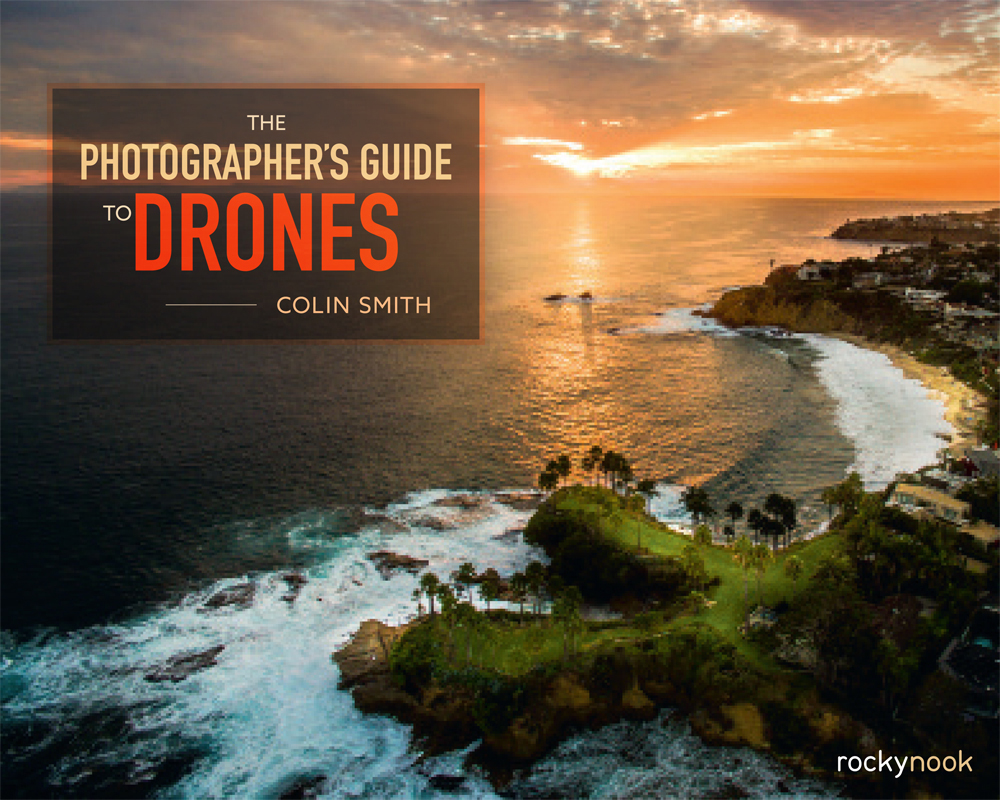
 COLIN SMITH
COLIN SMITH




